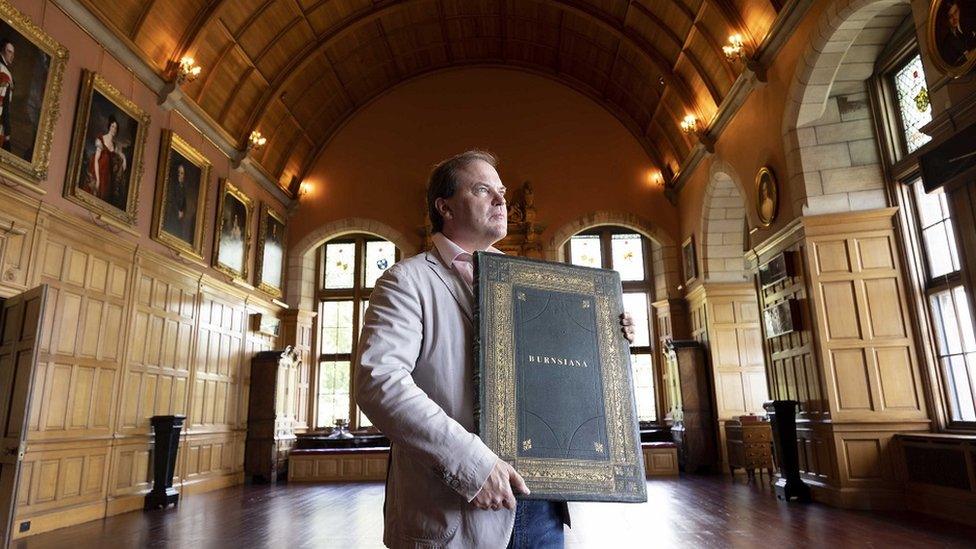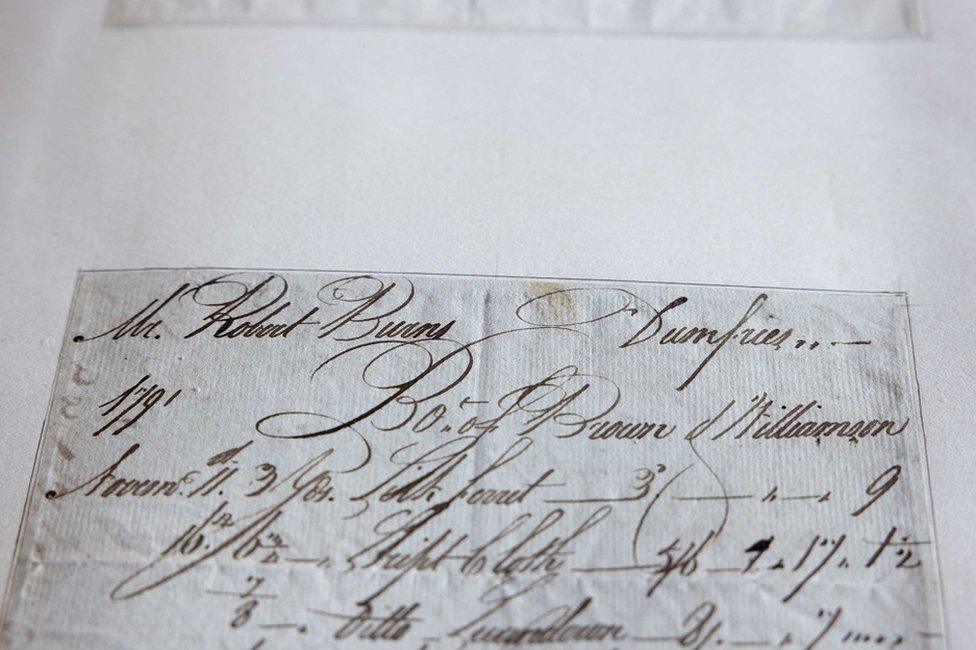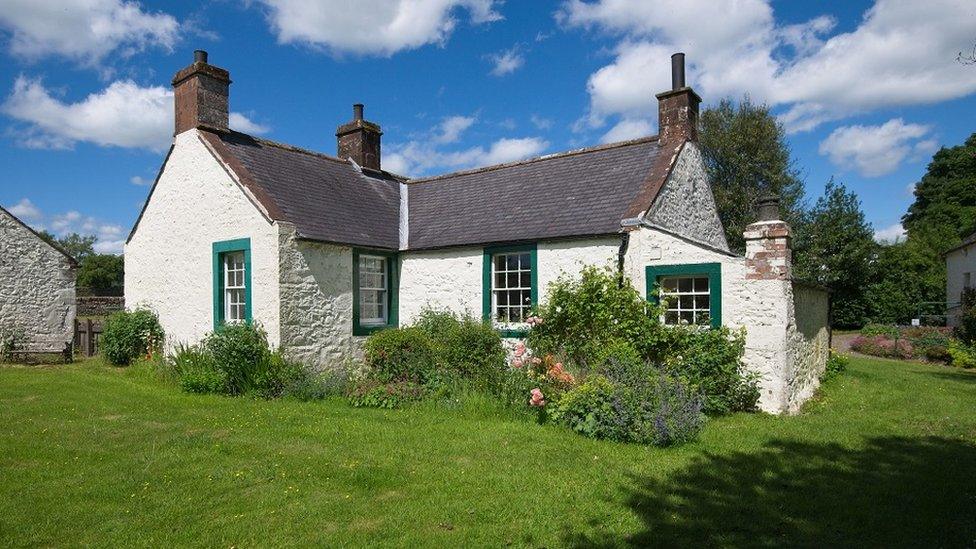Barnbougle Castle document discovery sheds new light on Robert Burns
- Published

The works at Barnbougle Castle give more information about Burns' time at Ellisland Farm
Documents discovered at a 13th Century castle near Edinburgh have provided a "fascinating picture" of Robert Burns' life on a farm in southern Scotland.
University of Glasgow experts were invited to Barnbougle Castle by the Rosebery family.
Among the collection they examined was an "unexpected bonus" of a book labelled only Burnsiana.
It helped to provide new insight into his time at Ellisland Farm north of Dumfries in the late 18th Century.

Further study of the work is to be carried out
Prof Gerard Carruthers said: "We are so grateful to the Rosebery family for giving us access to this superb collection and in particular for lending us Burnsiana to delve even further into the materials held within it.
"The book contains a full set of evidence for Burns' construction of Ellisland, previously unknown, including quantities of nails, floorboards and door frames.
"Here we have the minutiae of Burns constructing his first family dwelling as an adult, building both a house and a home."
He said it also painted a "fascinating picture" of life on the farm including bills for shoes, buttons and buckles to clothing materials like corduroy, calico and linen.

Prof Carruthers said the documents painted a "fascinating picture" of life on the farm
"It shows Jean Armour's domestic economy including what foods they were growing at Ellisland with receipts for seeds including cabbage, beans and linseed to quantities of beer and honey consumed," he added.
"This material is a real game changer for our knowledge of Ellisland and its future conservation."
Dr Pauline Mackay, co-director of the Centre for Robert Burns Studies, said the "exciting discovery" was particularly timely with plans to be taken forward to redevelop the farm.
"It will also enable us to contemplate further how we might use XR [extended reality] technology to compose and access important Burns-related sites, and to illuminate their evolution from the 18th Century to the present day," she added.

Plans are being developed to make Ellisland a world-class heritage attraction
Lord Dalmeny, son of the 7th Earl of Rosebery, said his great-grandfather Archibald Primrose had been a "keen collector and historian" and Burns enthusiast.
However, he said it was only through the expertise of the University of Glasgow team that they had realised the full significance of the Burnsiana book.
Joan McAlpine, business development manager with the Robert Burns Ellisland Trust called it an "incredible discovery" at the "perfect time" as plans were moving forward to make the site a world-class heritage attraction.
Related topics
- Published7 October 2022
